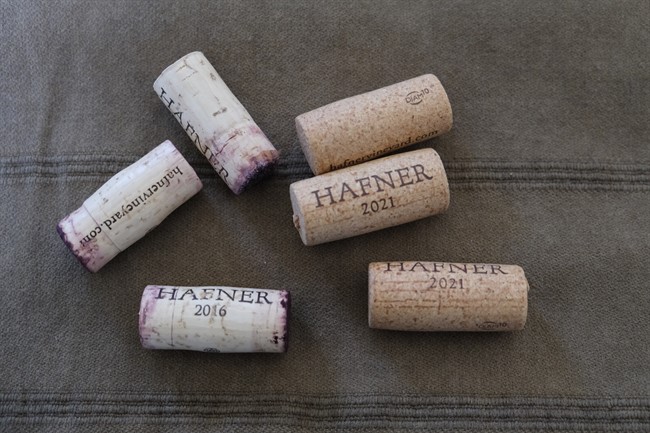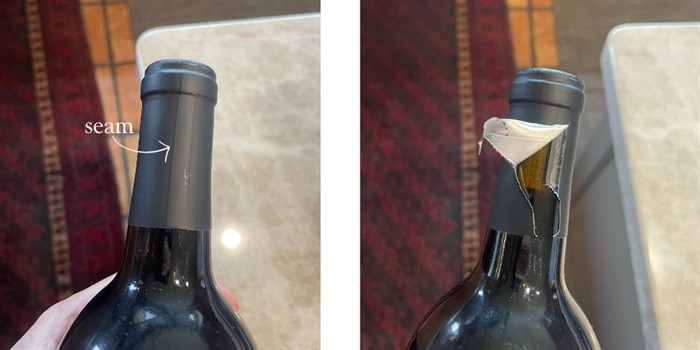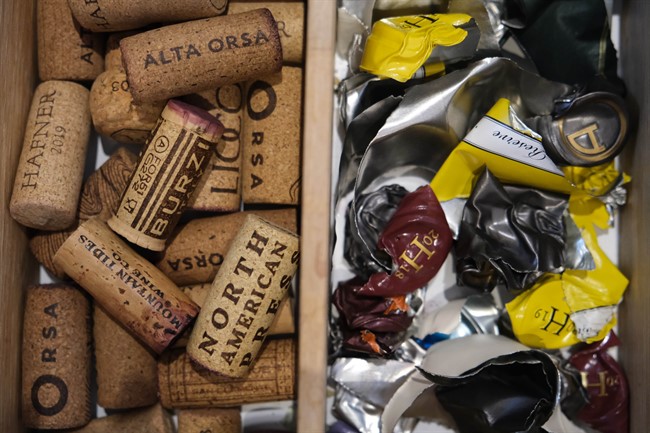Cork & Capsule Recycling Program
- April 15, 2024
Here at Hafner Vineyard, we are always looking at ways we can reduce our carbon footprint and create less waste. We try to look at each step in the process: growing grapes, making wine, bottling it and shipping it to you.
Then we consider the final waste… the empty bottle. We hope that the bottles are recycled. (Fun fact: the darker the glass, the more recycled glass can be used. More on that in an upcoming blog.) But there are two remaining pieces when the bottle is empty… the capsule and the cork. We recycle those as well and we wanted to invite you to join us.
Introducing our cork and capsule recycling program!
All you need to do is follow a few steps in sorting your corks and capsules, box them up and ship or deliver them to us.
Sounds easy, right?! It is! With a few lessons.
First let’s talk about the cork recycling. Only “punch corks” (all natural) or “technical corks” (natural cork that is ground up and glued back together) and sparkling wine corks can be recycled. “Synthetic” corks are plastic and cannot be recycled with us.
We used punch corks in our wines in the Chardonnays until 2018 and the red wines until 2016. Since the 2019 Chardonnays and 2017 red wines, we began using technical cork. (Learn why we made the switch here.)
 Punch corks on the left and technical corks on the right
Punch corks on the left and technical corks on the right
So what happens when you send us your corks? We ship them back to our cork supplier Ganau who works with a company that repurposes the corks into cork flooring, shoes, etc. For many years, we worked directly with ReCork. This is a great company that takes only punch cork and repurposes them into the same type of products. Check out ReCork locations near you here.
Now for the capsule recycling. We can only recycle tin capsules (like the ones we use here at Hafner Vineyard), not polylam (or poly-laminate) capsules. The polylam capsules are a combination of plastic and tin layers and together cannot be recycled. Those need to be put in the trash. The trick to telling the difference is that there is a small seam on the polylam capsules. This is where they seal the capsule together. Polylam capsules are also cheaper than tin, so are often found on very affordable wines.
 How to identify a polylam capsule
How to identify a polylam capsule
What happens once you send us your capsules? There’s a small company that collects them and buys them for a nominal fee (which means we get to buy croissants for our 10am team break!) then takes them to be melted down and reused again.
Want to join us? Here’s how:
- Start collecting corks and capsules from any winery. (We have sections in our kitchen drawers where we collect them over time.)

- Make sure to separate the corks and the capsules. They need to be in separate bags or boxes when they come to us.
- Once you have a substantial amount, at least a cup of capsules and three cups of corks, email me so I can give you an address of where to ship them and be on the lookout.
OR…
If you are a Bay Area patron and purchase cases of wine, you probably know Matt who delivers cases to patrons’ homes. He is happy to pick them up. Just let us know when we confirm your delivery.
OR…
If you are picking up wine at the winery or visiting us for a tour, we’d be happy to take the corks or capsules then, just let us know ahead of time.
4. Then open another bottle of Hafner wine knowing that you’re doing your part to create less trash and recycle as much as we can.
Thanks for joining us and please don’t hesitate to reach out to us with any questions that you have.
Want to dive deeper into our sustainable practices? Learn more here.



